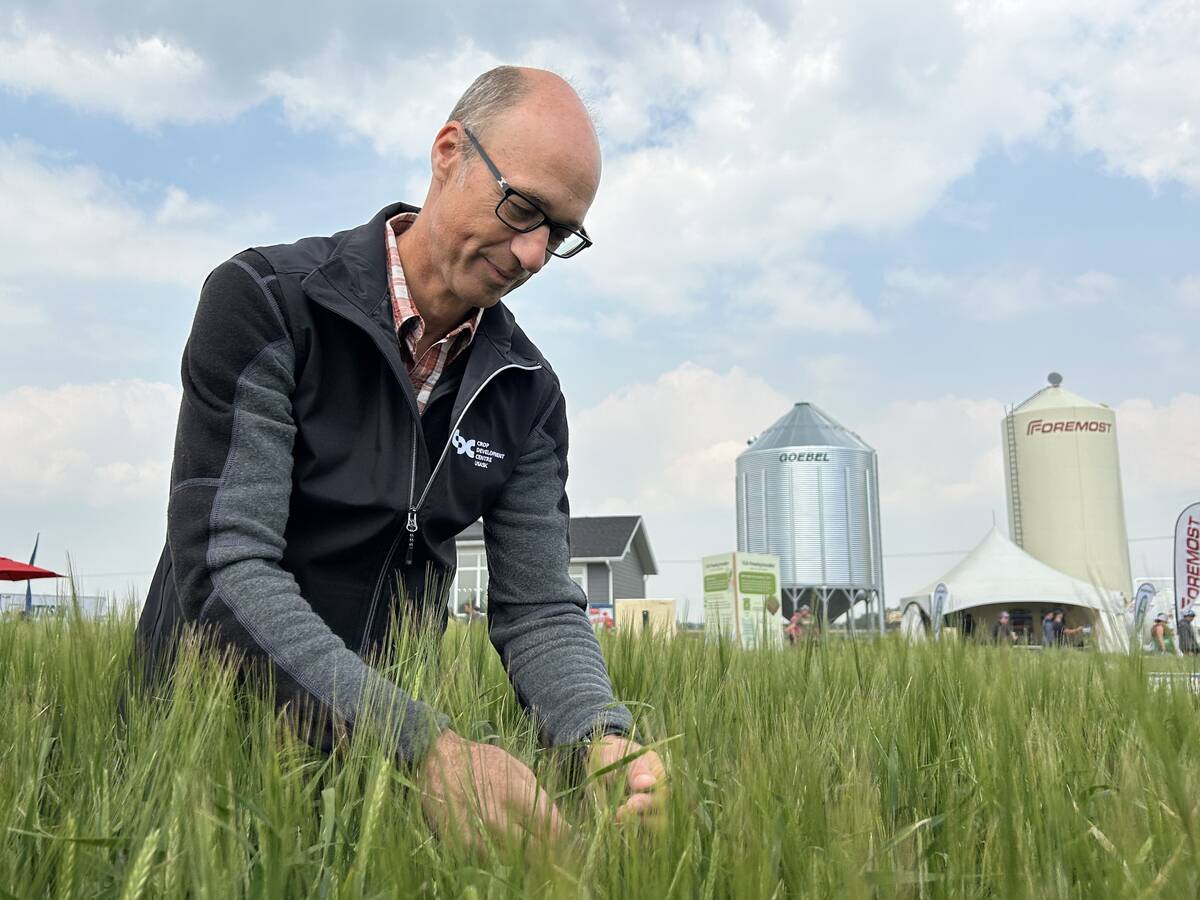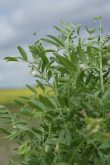LANGHAM, Sask. – On a 16 C but smoky morning July 16, Aaron Beattie stood next to demonstration plots of spring wheat, oats and barley at the 2025 Ag in Motion farm show, northwest of Saskatoon.
Each of the plots was labelled with a sign listing the name of the variety, how yield compared to a check variety, a resistance rating for diseases such as fusarium or stripe rust and other information.
Follow all our Ag in Motion coverage here
However, none of the signs had information on drought tolerance and how the variety might yield during a hot and dry growing season on the Prairies.
Read Also

Land crash warning rejected
A technical analyst believes that Saskatchewan land values could be due for a correction, but land owners and FCC say supply/demand fundamentals drive land prices – not mathematical models
Which leads to the question: should wheat, oat and barley varieties come with a drought tolerance rating so farmers have that information when choosing what to grow?
“It would definitely be useful, (but) it’s a matter of having the resources to pull that information together,” said Beattie, an oat and barley breeder with the Crop Development Centre at the University of Saskatchewan.
Picking a drought tolerant variety of spring wheat was important in parts of Saskatchewan in 2025, especially the western half of the province.
For instance, the region around North Battleford received less than 25 millimetres of rain in April, May and the first couple weeks of June.
“We were a couple of weeks ahead of schedule (for crop development), mostly due to heat stress and drought,” Quinton Cubbon, a crops extension specialist with Saskatchewan Agriculture in North Battleford, said in the third week of June.
“The lower leaves on some (cereal) plants, you could see the drought symptoms. They were turning brown. Some of the wheat (was) already heading out.”
Some farmers in the region could have selected a spring wheat variety or barley that performs well under drought, but that sort of information is mostly anecdotal.
At Ag in Motion, Beattie pointed toward the plot for CDC Maverick, a feed barley. It has a reputation for doing well under dry conditions, he said.
Drought hardiness is an important trait for growers, right up there with disease tolerance, said Todd Hyra, western business manager for Secan, a supplier of certified seed.
However, what farmers are really seeking is yield stability in bad years and strong performance when growing conditions are better.
“It’s about consistency. Growers like to have the big yields, but they don’t like to see the downside (of yield),” he said, standing by the Secan tent at Ag in Motion.
“Having something that is yield stable is an important piece of that.”
Canada’s system of registering new varieties does identify the lines of cereals that provide that stability. Potential varieties are tested across a range of geographies and growing conditions. That weeds out the varieties that are inconsistent, such as a spring wheat that has the top yield at one location but is ranked No. 25 at a different site on the Prairies.
That sort of variability is a red flag, Hyra said.
“You’re trying to find the products that shoot the lights out, under exceptionally good conditions and are stable under other conditions.”
The registration system does deliver on yield stability, but certain cereal varieties do have more tolerance for drought.
Farmers can get such information from their local seed grower or dealer.
A seed grower would know if a spring wheat variety has stronger yields in a dry year because they’ve grown it and compared its performance to other wheats.
Plus, farmers always talk to other farmers about what variety they grew last year and how it performed.
“That (chatter) between farmers and back to the companies is where you really learn new things about the variety,” Beattie said.
“We do rely on that (informal) system.”
Having a rating system for drought tolerance might be helpful, but it would require a lot of data collection, he added.
“You would have to continually grow every variety that’s come out in the past 10 to 15 years,” Beattie said.
“It’s a tough piece of information to gather.”


















